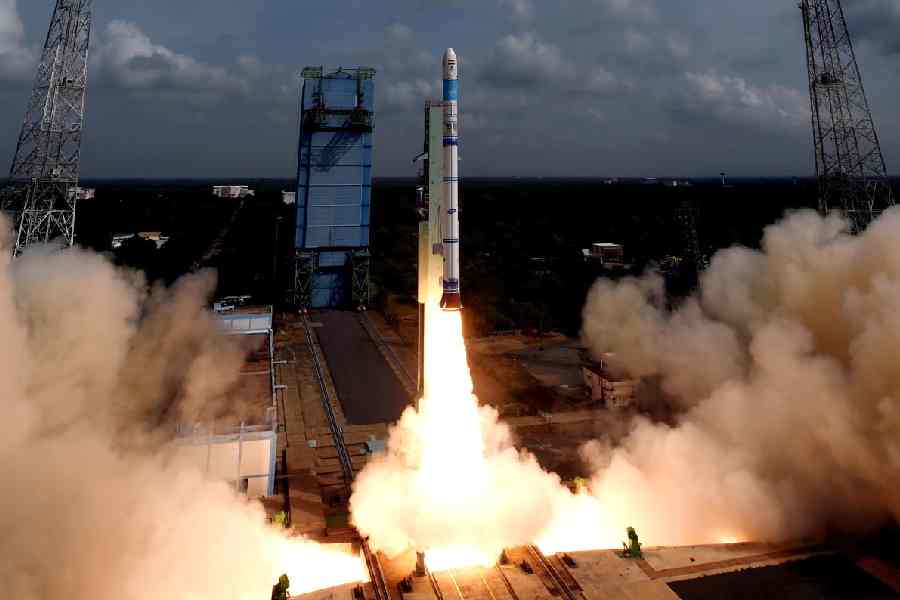India’s space agency on Friday declared its first new rocket in two decades as “operational” and ready for transfer to the industry after the Small Satellite Launch Vehicle (SSLV) flawlessly ferried two satellites into Earth orbit.
The SSLV lifted off from the Sriharikota island spaceport off the Andhra Pradesh coast and minutes later released two satellites 475km above Earth, completing the rocket’s third development flight since the first, two years ago.
“With this third developmental flight of SSLV, we can declare the development process of SSLV completed,” Indian Space Research Organisation (Isro) chairman S. Somanath said after the launch. We are (in) the process of transfer of technology of SSLV to industries for serial production and launches of SSLV on a commercial basis.”
The SSLV, designed to carry payloads up to 500kg, will join Isro’s stable of existing operational rockets, the Polar Satellite Launch Vehicle developed in the 1990s and the Geosynchronous Satellite Launch Vehicle developed in the early 2000s. Isro hopes to transfer the SSLV technology to industries to facilitate low-cost, launch-on-demand services with quick turnaround times.
“We’re now moving into the operational phase,” SSLV mission director S.S. Vinod said on Friday.
The SSLV’s primary payload on Friday was an Isro-built experimental spacecraft called EOS-08, a satellite designed to evaluate and demonstrate multiple new technologies, including flexible solar panels, integrated avionics, and embedded multifunctional structural panels.
“We are demonstrating more than 20 new technologies through EOS-08,” V. Avinash, the satellite director, said after Friday’s launch. These include three new payloads, including an infrared payload that will enable day-and-night imaging with potential applications in satellite surveillance, disaster monitoring, environmental monitoring, and tracking of industrial or power plant disasters.
Another novel payload called the UV (ultraviolet) dosimeter aboard EOS-08 is intended for the Gaganyaan spacecraft, Isro’s planned manned spacecraft mission. The dosimeter will monitor the UV exposure at the viewport of the crew module and could serve as an alarm sensor for UV radiation. A UV dosimeter has been placed aboard EOS-08 “to get in-orbit experience,” Avinash said.
The SSLV’s second payload was a miniature experimental satellite named SR-O-DEMOSAT developed under an initiative for schoolchildren and college-goers.
The SSLV’s first developmental flight in August 2022 had placed its payloads — two Indian-made satellites — into wrong orbits after what was otherwise a successful 13-minute launch. But Isro engineers determined the source of the error and implemented corrective actions, leading to a successful second developmental flight of the SSLV in February 2023.
The SSLV’s operationalisation comes at a time when the small satellite market is expected to grow at an annual 12 per cent over the next six years.











